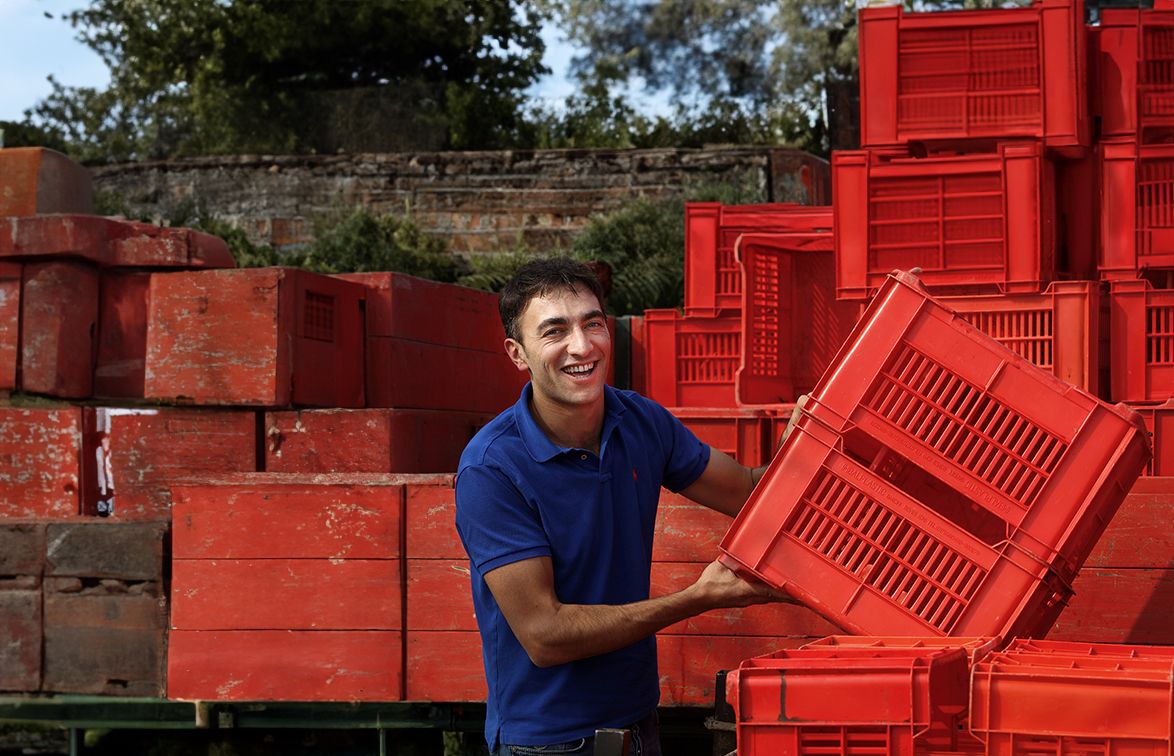Today, they not only own their eponymous Barolo winery in Vergne but are also the custodians of Luigi Baudana in Serralunga d‘Alba and Monterustico in Dogliani, a lesser-known region once more sought after than Barolo.
Aldo’s son Giuseppe now works with him at the helm of G.D. Vajra alongside his siblings Francesca and Isidoro. We delved into their family history during Giuseppe’s recent UK trip to discover more about Aldo’s legacy and his own outlook on G.D. Vajra today.
For more information about purchasing any G.D. Vajra, Monterustico or Luigi Baudana wines, please contact your Account Manager. Not yet a customer? Contact Us to discuss opening an account.
Your father Aldo founded the G.D. Vajra estate when he was just 15, could you talk us through how this happened and what inspired him to do so at such a young age?
It is quite crazy that Aldo chose to be a farmer at such a young age. He always had a passion for farming, even as a young child, but it was often overlooked. Farming wasn’t the ‘flower of the day’; it wasn’t something that many other children wanted to do. When he was 15, he was caught demonstrating against the army in Turin. The problem is my grandfather was the guy who caught him. He was working for the Ministry of Defence, right there at the army headquarters and wasn’t very happy to see his son in that tense crowd! So, Aldo was sent to the family farm in Piemonte as a kind of punishment.
That summer, he fell in love with their way of life. It resonated with him. It was about freedom, a sense of harmony, and getting a sense of the craft behind the manual work. He went home for his next year of high school and told my grandparents that he wanted to return to the family farm. I can imagine how my grandmother must’ve almost fainted at that! Falling off her chair in shock. [laughs] But yes, that is how it all began.
Organic viticulture has been a core value of yours since the estate was founded. What drives this approach?
We moved into organic farming in 1971. I believe we were the first vineyard to be managed organically and potentially the third farm in the whole region to grow that way as well. While studying at university, my father was allowed to run the estate and take it back from the sharecroppers. This was the trade-off he had with my grandfather. He could work as a farmer, but he had to get a university degree as well.
At university, he met Francesca Garofalo, the only professor in the Faculty of Agriculture interested in organic farming. He ran a course on the topic and would meet after hours with any students who were interested in looking at the core of organic farming and what farming was like before chemical interventions. This is what inspired my father to start working organically at the family estate.
He began the transitions in 1971, and 1972 was the first vintage that he made wine at the age of 19—still incredibly young!
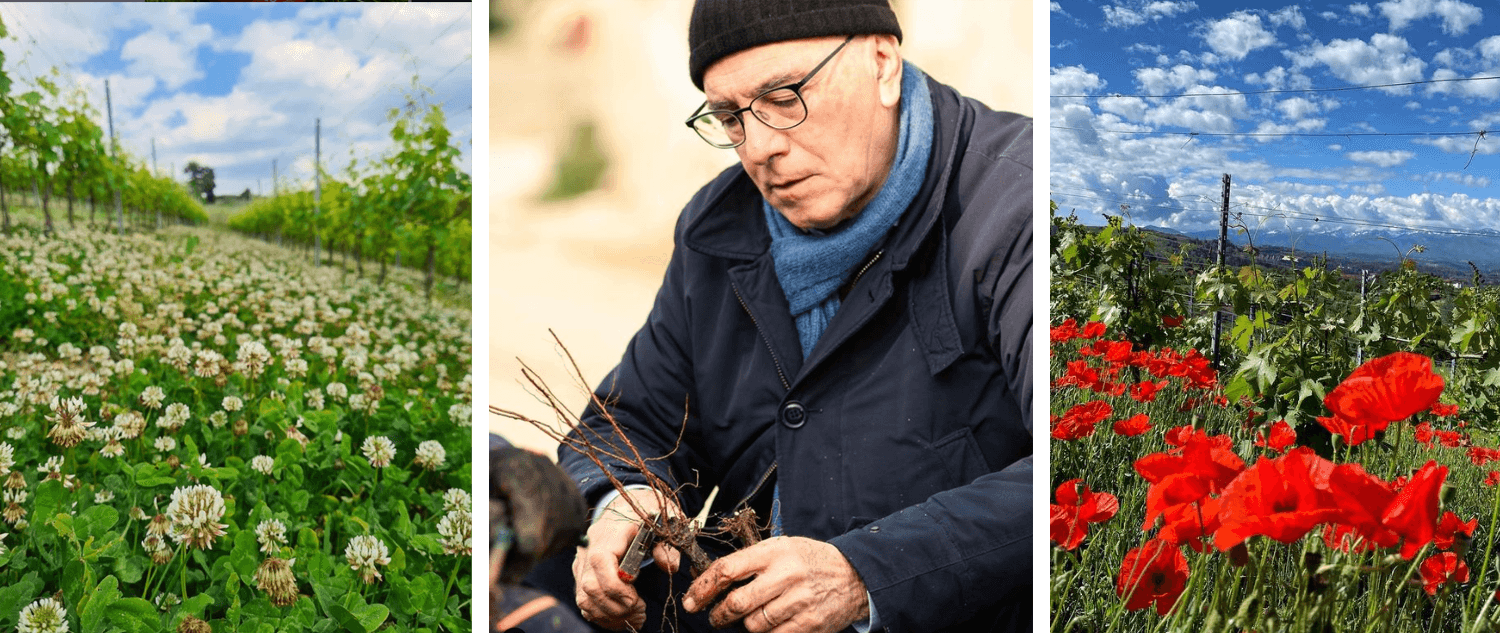
Aldo Vaira in the G.D. Vajra organic vineyards.
How does this organic approach feed into the winemaking at G.D. Vajra?
There’s nothing we can do to create a wine in the cellar. Our job in the cellar is to honour, protect and care for the fruit that has come from all these months of hard work in the vineyards. To use a metaphor, I think winemaking is like taking a photo. The whole goal we have with winemaking is to have a picture without any filters.
Achieving this is about balance. It requires us to be very knowledgeable about nature and be very gentle with our touch. We love long skin contacts, for example, but in order to do so, you have to be very careful not to over-extract. We like drinkability, but we also seek to make wines that can age. For me, one of the biggest sources of inspiration is thinking about the wines that stir my emotions. How were they made? They are always made by people devoted to their craft, people who are relentless in their work, and that's what we try to embody. It makes for very long and exhausting harvests, about two months of easily 18 hours of work a day, maybe more, but to me, it’s also the most joyful moment of the year. It’s the moment where you feel really alive.
These are wines with a real sense of place. They’re very good at telling you where they’re from, whether it’s Barolo, a specific MGA or the Langhe as a wider area. What is it that distinguishes Barolo and Piemonte from other Italian regions?
I think the best of what Barolo can offer, is a mystery that unfolds in your glass. Though you can find that in many Nebbiolo expressions, Barolo has the peculiarity of a specific microclimate, with a soil composition and geology that offers a deeper mystery. It is just like being immersed in a very compelling novel, where you just can’t wait to turn the page and discover the next layer of the story. That, to me, is Barolo.
I feel that this identity is confused when people create an incredibly packed and heavy Barolo. I don't think complexity and heaviness are the same. At GD Vajra, we seek to express complexity while keeping the wines beautiful and drinkable. I’m not saying that there is a right or wrong way to make Barolo, but I would always like to make wines where you want to drink the bottle, not just a glass.
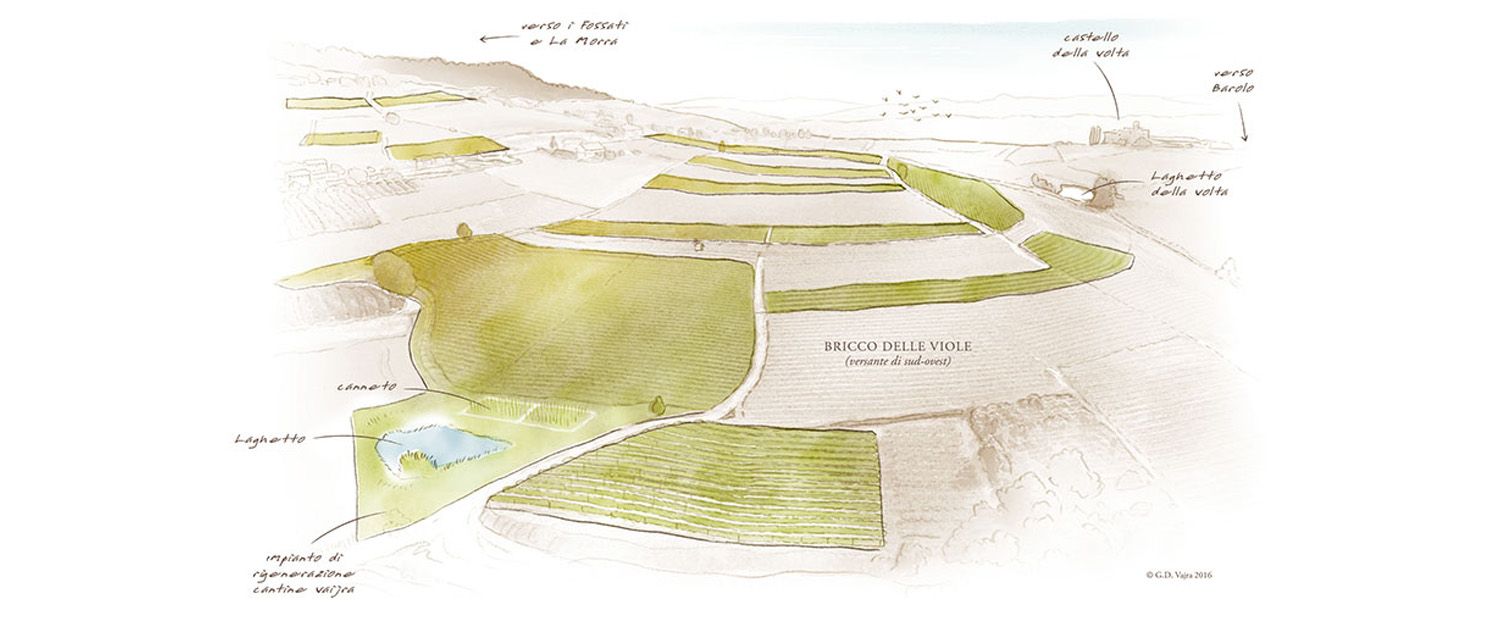
The 'Bricco delle Viole' MGA
The MGA system (Menzione Geografica Aggiuntiva) helps distinguish different single vineyards in Barolo. How many MGAs do you work with, and what sets them apart?
We work with a lot of MGAs, but we don't bottle or release all of them. Right now, we focus on 'Bricco delle Viole', which is the vineyard my family has farmed for centuries. It is our legacy, the roots of the family.
We also produce an MGA called ‘Ravera’. People say it’s up and coming, which might be true, but it’s also true that ‘Ravera’ has a longer pedigree that is internationally known. In fact, my parents were already farming here back in 1984/85. We've been making a ‘Ravera’ Barolo from our current vineyard since 2010.
Then we have ‘Coste di Rose’, a beautiful, unknown spot. We chose it as one of our single vineyard Barolos because of its geology, which is completely different from anything else. It’s very, very sandy.
Finally, in Serralunga d‘Alba [where the Vaira family make the Luigi Baudana wines], we have two single vineyards called ‘Baudana’ and ‘Cerretta’. So, these are all the MGAs that we currently bring all the way to the bottle. There are some others, such as ‘Fossati’, ‘Coste di Vergne’ and ‘La Volta’ – which make up the blend of Barolo ‘Albe’ – but for a single vineyard bottling, it’s always a matter of personality.
When we see a site that really distinguishes itself, we start dreaming of perhaps bottling it as a single vineyard.
Is there potential for some of these MGAs that you aren’t currently bottling to be part of your single vineyard offering?
I would say, yes, there is definitely potential, and there are good examples of single-vineyard wines for each of these MGAs from other producers. But it’s all just a matter of balance, time, site age, and inspiration. So, we will see what happens. Never say never.
You are clearly very passionate about your family business. What made you want to get involved? It’s not always a given that the son will follow in the father's footsteps after all.
Originally, I planned to go to medical school. I was pretty much on that programme; I just needed to show up and sign the paperwork. But I was conflicted because I had been farming our vineyards and working in the cellar since I was 15, and I really loved the craft. I loved the people in wine, the people who visited my parents from all over the world, who I would meet over gorgeous lunches and dinners. And I loved wine itself. I loved the taste of it and was really starting to get into it properly.
I was so torn between wine and going to medical school. I asked my father: ‘What is the social sense of this job?’ After a long pause, he said, ‘Giuseppe, if you want to save lives, then go and be a doctor, but look at that painting,’ and he pointed to a painting in the dining room, ‘we don’t need this to live. We don’t need poetry or music to live, or a good meal, or good wine. But what would life be without beauty?’
I was really keen to make a meaningful choice. I felt a sense of urgency, that time needs to be well spent. Time well spent today might be just being silly with my children, so I am not saying you need to do huge things or have big accomplishments, but having meaning in your life is important.
My father's answer that night gave me a whole new perspective. That’s how I chose winemaking.

That is a great way to look at it. You don’t need to be saving lives to be doing something meaningful. Wine isn’t something we need to live, but it definitely brings a lot of joy.
Our craft [wine and winemaking] is like lying in a field, looking at a starry sky. You see how vast it is, its beauty and complexity. And then, you start to study it. You pull out a telescope and zoom in, and in, and keep going deeper into the details. The curve of knowledge is never finished; there’s always something new to learn. This can be intimidating, but the truth is, it’s also very exciting. And you can also just remove the telescope for a moment and enjoy the full starry sky.
That’s our industry; you can go as deep as you want, but you can also just share a good bottle with friends and be casual about it.
One more element that I love about wine is how, like art or music, it can resonate with people. You don’t need to know the language of, say, Bach or Pink Floyd to understand that it’s great music. You don’t need to be an art expert to appreciate the beauty of great paintings. It’s the same with wine. There is an immense craft and attention to detail involved with making it, but good wine can talk to people regardless of their knowledge on the subject. To me, that is amazing.
Under the Vaira family banner, there are many amazing wines to choose from. Could you tell us about a few that you find especially interesting? Not necessarily your favourite, but perhaps an interesting vineyard, winemaking technique or grape variety.
I always walk into harvest, aiming to give 100% to each ferment and grape, whether from a young site or an obscure variety. We try to give each wine the same attention and devotion.
That said, if I look at 2023 as a vintage, I am very fond of fermenting Slarina [a rare, indigenous Piemonte grape]. It’s a very interesting variety with a beautiful spiciness. I’m still trying to figure it out, as some years it looks like a shy, introverted version of Pelaverga [another indigenous Piemonte grape], and in some vintages, it shows more muscle and intensity.
I love doing submerged caps, which we do not just on Nebbiolo but also on Barbera, Friesa, and Dolcetto. I love that moment when you’re past the peak of fermentation. Things are slowing down, and you have a bit more time to consider the next step, and I love that.
I also love the ‘Coste di Rose’, our newest Barolo single vineyard. It’s a very contemporary expression, super perfumed with textbook aromas of cherry and rose petals, but it is also very enjoyable while young. I love respecting the GD Vajra classics, but I also love the new wines we are introducing, which let us explore different elements of the vineyards and our winemaking.
Gustav Mahler once wrote that to love tradition is to keep the fire alive, not to adore the ashes. You can cling to tradition and lose that fire, that passion, but equally, you can embrace the latest trends and lose tradition altogether. I want to embrace tradition in a way that is also fun and educational and takes you on a journey of discovery. Every vintage, that is what we try to do.

‘Pétracine’ on the G.D. Vajra label; an ancient synonym for Riesling
You’re well known for your red wines at G.D. Vajra, but you also have Riesling plantings. What made you decide to cultivate Riesling in Piemonte?
My parents planted our original Riesling block in 1984/85, and it was the first example of Rhine Riesling cuttings ever planted in Piemonte. There is a lot of romance around this vineyard, as it cost my parents their honeymoon. They used their honeymoon money to buy this parcel just months before their wedding, with the promise of going on their honeymoon another time. They’ve just celebrated their 40th anniversary and they still haven’t taken a proper honeymoon! [laughs] Maybe that’s the secret to being married for 40 years!
They bought this vineyard and discovered that the soil in the sector closest to La Morra, just below a small forest, was drastically different. It was no longer Tortonian, sedimentary soil. Instead, it was an alluvial soil formed at the end of the Ice Age, when a massive flood brought this alluvial material over the ridge of the hill. The amount of gravel, pebbles and sand here meant it wasn’t fit for Nebbiolo.
Instead, my parents felt it might suit a white variety, and my father had a huge passion for Riesling, something he had been nurturing since the 1970s. I think at one point, we had roughly 4,000 bottles of German, Austrian, and French Riesling in our cellar! So, after some brainstorming, they settled on Riesling, and it just clicked.
It was quite an adventure. For the first three vintages, they would have to drive the fruit 30 or 40 kilometres away to borrow a friend's press in the Asti region. Between 1993 and the mid-2000s, we were forbidden to write Riesling on the label, which meant we had to sneak an ancient synonym for the grape called ‘Pétracine’ onto the design.
Yet now, there are north of 36 producers who currently have Riesling planted in Piemonte. We feel very grateful to each one of them, and we also feel terribly embarrassed because we never planned to create a trend. I think it's beautiful, though, that when you sit down in a good Piemonte restaurant today, you will find a vast and beautiful local Riesling selection.
Outside of your family estate, the Vaira family also owns a couple of additional projects. The most recent one for us is Monterustico in Dogliani. What made you decide to breathe new life into this forgotten region?
Dogliani is a beautiful region. When you walk around the village, you get a sense of its ancient wealth, nobility, and history. It was once a major trading centre, with the Via del Sale—the ‘Route of Salt’—passing through, allowing preserved fish, salt, and wine to travel inland to the Langhe.
It has a lot of history, but there was a moment in 2015 when a kilo of hazelnuts would cost more than a kilo of Dolcetto grapes. It was a tipping point. Many old farmers without children to inherit their vineyards saw the market for grapes being eroded. They started to sell or abandon their vines, and these sites were repurposed for other agricultural needs. I think there was also an identity crisis in the region about the future of Dogliani wine and Dolcetto.
This was when we decided to see if we could help. Monterustico started out as a crazy project to try and rescue vineyards that we felt deserved a second chance. We found a gorgeous, abandoned estate, which now forms the backbone of the Monterustico winery today. We feel incredibly honoured because as we’ve started farming these vines, other people have been paying attention, and more opportunities in Dogliani are opening up.
Monterustico is a very interesting place in terms of geology. It is bordered by the Tanaro River, so there are alluvial, loose soils close to the river, which is where we get more perfumed fruit. Then, in the centre, there is more clay, which helps create the signature structure of the Dogliani wines. Finally, at the top of the hill is marl, which offers both perfume and structure. We have worked very hard on these vines, and we are very pleased with the wines we’ve been making at Monterustico.
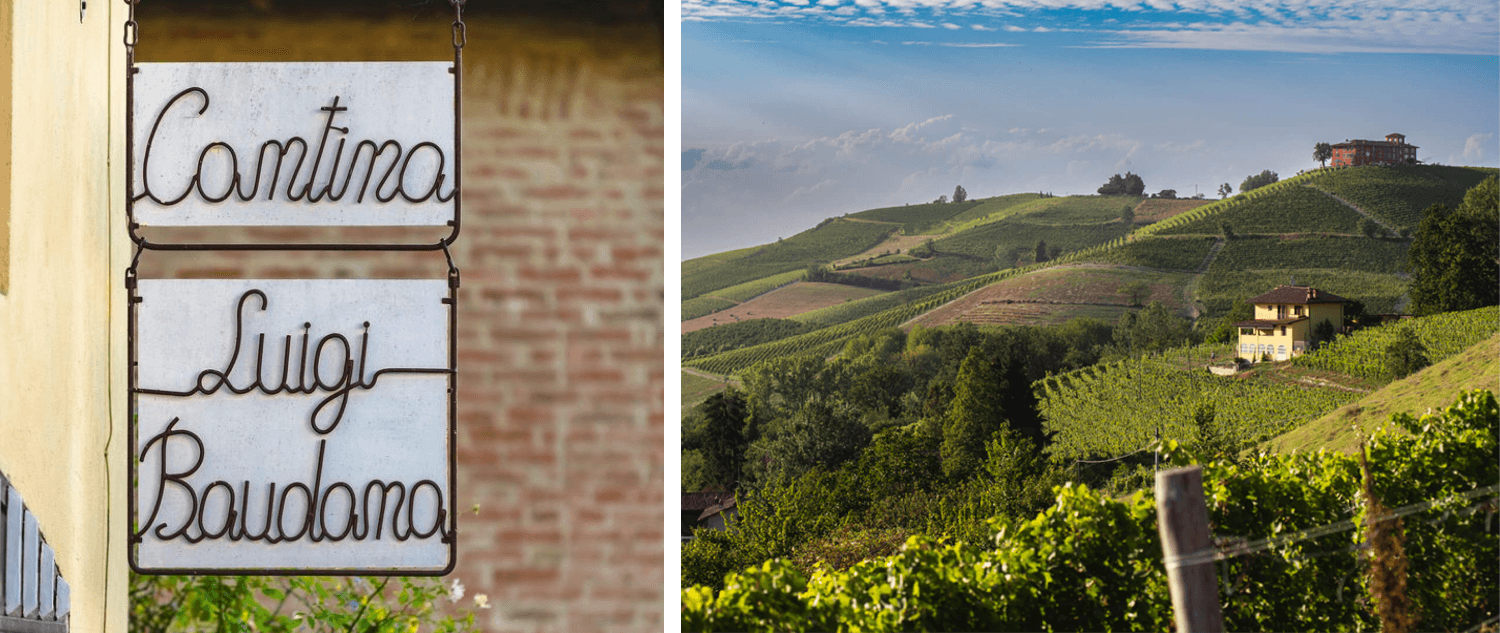
Luigi Baudana is another winery that the Vaira family are now custodians of. Why did you decide to take the reins here?
My father has had a passion for Serralunga d‘Alba since he first started making wine. He has always been humble, seeking advice from the older winemakers in the region. They taught him the nuances of the work in both the cellar and vineyards.
One of these people was a guy from Serralunga d‘Alba, who helped my father prune his vines. You can imagine it, this elderly man and this young kid, pruning together side by side in a snowy vineyard back in the late 1960s and early 1970s. They would talk and talk, with the older man telling stories of Serralunga d’Alba. I think this was the moment when the seed of passion for Serralunga wines was planted in the heart of my father, and it spread through our family.
In 2008, a friend of ours told us about a retired couple in Serralunga d‘Alba with no children who were rumoured to be looking to sell their remarkable vineyards. They had been approached many times by prospective buyers, but they had always resisted. We were able to get to know this couple and the more time we spent with them, the more we got to respect their humility and also their pride. We got to understand how those vines had been tendered with so much love for their whole life. It was the legacy of their family. We were able to take on this estate and continue that amazing legacy by making the wines of Luigi Baudana in their original cellar.
A favourite story of ours at Liberty Wines, is how a young Stephen Pannell ended up working for G.D. Vajra, inspiring a lifetime love of Nebbiolo. You’ve actually had quite a number of Australians work for you since then, too.
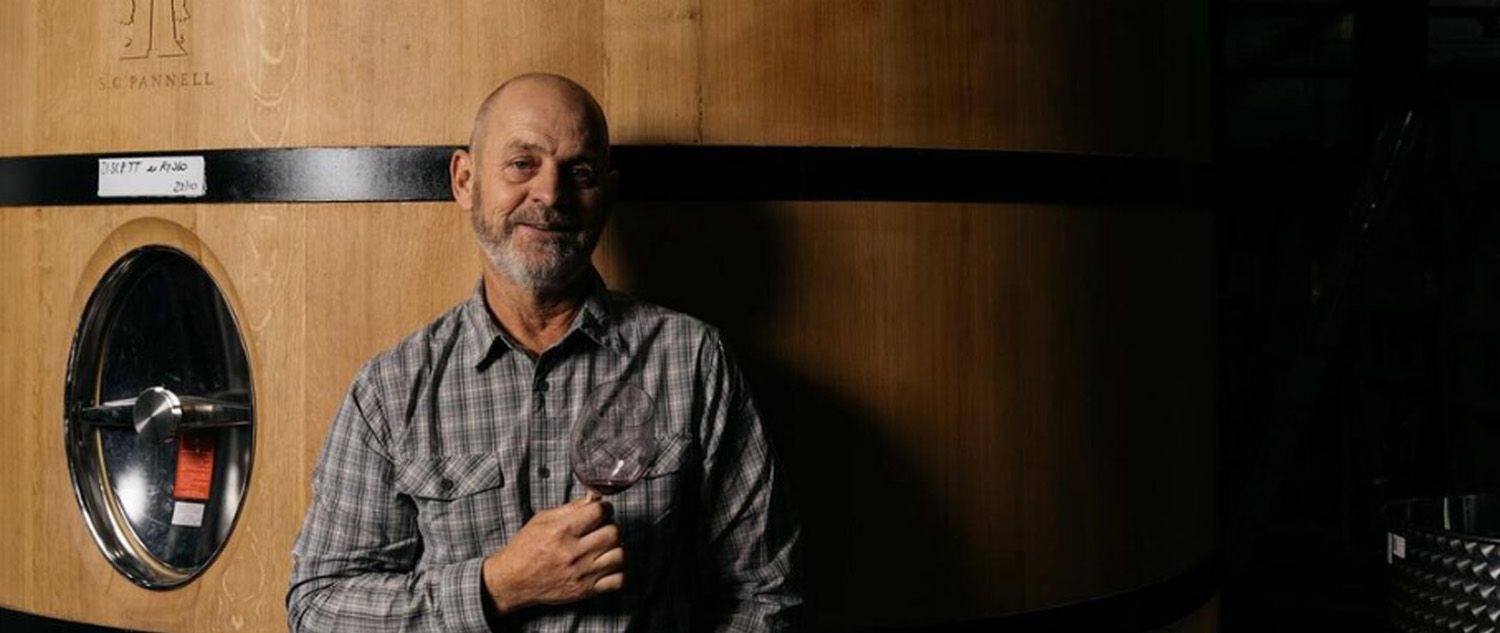
Australian winemaker Stephen Pannell makes the Protero Nebbiolo in the Adelaide Hills.
What do you think it is about Barolo and/or Vajra that attracts so many talented Australian winemakers?
I would say that David Gleave MW [Liberty Wines Chairman and Co-Founder] has a big responsibility here because it was David who first sent Steve to us.
It was 2004, and I think something got lost in translation because we were expecting a teenager to turn up, and there’s Steve, who is young but has a wife and two kids! He was already very established. It was hilarious because, on his first day of work, some people from Australia walked into the cellar and saw Steve and kept saying, ‘Oh my god, Steve Pannell is here!’ [laughs]. We had welcomed him without knowing about even a fraction of his talents and accomplishments or the fact that he’d quit a big job just for the sake of coming to do harvest and learn more about Nebbiolo with us.
It has been a gift of friendship, for which we will always be grateful to David for facilitating. Our friendship with Steve and his family has become a cornerstone that defines Vajra. When we look back on what makes us the people we are, the answer will be friendships like this. It was crazy when, two years ago, we welcomed Finn Pannell to harvest, who was a newborn baby in 2004. Now he’s taller than me and super energetic. It was fantastic.
Since then, I think Steve has really inspired other people to come to Piemonte. Before Steve came to Barolo, there were very, very few Australians and New Zealanders in the region. This has started an exchange of knowledge. The beauty of wine internships, at least in the way we try to look at them, is that we can teach something, but we can also learn from people.
What are your thoughts on Australian Nebbiolo and/or Barbera? They’re grapes that seem to do quite well in Australia, as well as Piemonte.
I have tremendous respect for these wines. They’re made by people who care so deeply, who are very dedicated to growing this grape that isn’t native and is almost like a naughty kid. Nebbiolo is not easy; it’s difficult to grow well. There has been an incredible evolution and refinement of skills alongside this, so I think it’s a very promising story.
I see these wines as I see our Riesling. Our Riesling isn’t trying to compete with or emulate Rheingau, Mosel, Pflaz, or Alsace; it is just a wine of passion that carries a torch for the beauty of the grape. These kinds of wines can be very beautiful.
Bringing things back to Piemonte, is there anything happening in the region that currently excites you?
The most exciting thing for me is seeing the younger generation coming up. It does pain me a bit to say that though, because for a long time I was the ‘younger generation’, but now I have four kids and grey hair! [laughs]. But I think for every region, seeing the younger generation coming up is a gift. Too often, I think there has been a barrier among generations who haven’t understood that the next generation is the future of the region. For me, it’s brilliant that this isn’t the case now. We have lots of young people, both in established wineries and in family vineyards that previously sold grapes, making great wine. They have drive, ambition and a desire to improve. I find it very exciting.
On top of this, the exploration of heirloom varieties is something that’s moving, even if at a slow pace – you have to plant those vines and wait for many years to make wine from them. It’s the opposite of ChatGPT, where you write a sentence and get an answer in milliseconds; rediscovering an heirloom grape is all about time and patience. We are now at a point where the vast majority of heritage vines have been preserved. We can plant vineyards of Slarina, Nascetta or Chatus. It is too early to say what this brings to the future, but with the threat of climate change, I think it’s very interesting to have more indigenous options to explore.
For more information about purchasing any G.D. Vajra, Monterustico or Luigi Baudana wines, please contact your Account Manager. Not yet a customer? Contact Us to discuss opening an account.
